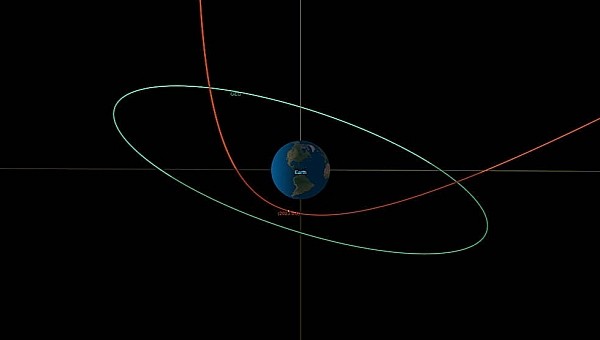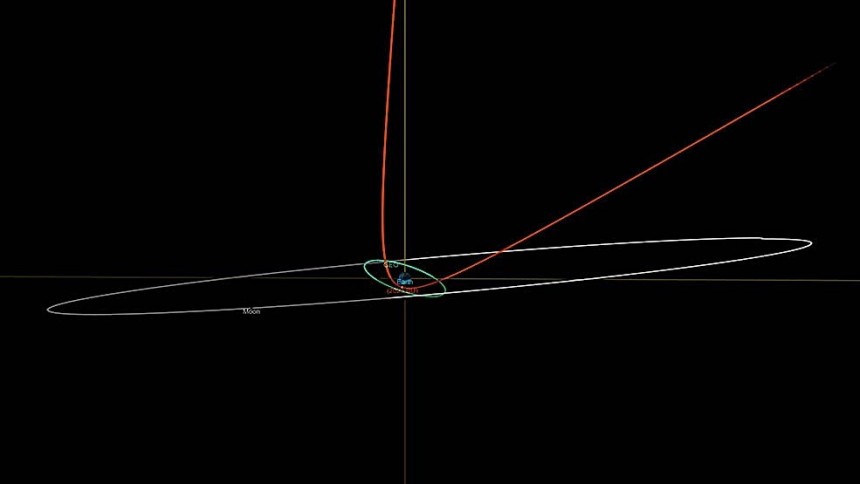It’s been a while since NASA last updated us on the number of meteorites and asteroids circling our world, but estimates are they’re in the tens of thousands. Sadly, even if we know they’re there, and we generally have the means to spot them, it’s extremely difficult to do so given the vast amount of space involved.
And even when we do spot them, there’s little we can do about it. Back in March 2022, for instance, astronomers caught glimpse of a small asteroid about to hit Earth, and could do absolutely nothing to stop it. The piece of space debris measuring 6 feet (2 meters) across and called 2022 EB5 blew itself up over the Norwegian Sea, luckily without harming anyone.
Now, as we’re well into the new year, the first major asteroid alert came our way. It involves a rock discovered on January 21 by the MARGO observatory in Crimea that’s about to make a remarkably close pass over the southern tip of South America.
After being spotted, scores of astronomers and observatories jumped on the asteroid, trying to predict what it’ll do. Now that they know enough stuff about it, and with a degree of certainty, they have made the data public, and it’s remarkable in at least several ways.
The rock, called 2023 BU, is between 11.5 and 28 feet (3.5 to 8.5 meters) across, larger than the one we mentioned earlier. It is, if you like, about the size of a box truck. On January 26 at 7:27 p.m. EST (that is just a few hours from the time of writing), it will zip past our planet at an altitude of 2,200 miles (3,600 km).
Now, that might not seem like something that should worry us, but by cosmic standards, it’s a near miss. More importantly, that’s well within the orbits of many of the geosynchronous satellites currently circling our planet.
NASA tells us there is however no reason to fret over a possible impact, as math showed there is no risk of the thing falling to Earth. And even if it did, they say, the asteroid is too small to survive the challenges of atmospheric entry, so it’ll probably burn up in the atmosphere.
Provided it misses the many satellites now in orbit around Earth, 2023 BU will have little impact on life on this planet. Yet, given its close approach to our massive blue marble, one of the closest ever recorded, the asteroid itself will be heavily affected.
Presently, it has a roughly circular orbit around the Sun, which it completes in 359 days. After Thursday’s encounter with Earth, its orbit will become elongated and expand the time needed to go around the Sun once to 425 days.
What that means for future encounters with our planet is not yet known, but 2023 BU will have everyone with an interest in such things looking up later today.
Now, as we’re well into the new year, the first major asteroid alert came our way. It involves a rock discovered on January 21 by the MARGO observatory in Crimea that’s about to make a remarkably close pass over the southern tip of South America.
After being spotted, scores of astronomers and observatories jumped on the asteroid, trying to predict what it’ll do. Now that they know enough stuff about it, and with a degree of certainty, they have made the data public, and it’s remarkable in at least several ways.
The rock, called 2023 BU, is between 11.5 and 28 feet (3.5 to 8.5 meters) across, larger than the one we mentioned earlier. It is, if you like, about the size of a box truck. On January 26 at 7:27 p.m. EST (that is just a few hours from the time of writing), it will zip past our planet at an altitude of 2,200 miles (3,600 km).
NASA tells us there is however no reason to fret over a possible impact, as math showed there is no risk of the thing falling to Earth. And even if it did, they say, the asteroid is too small to survive the challenges of atmospheric entry, so it’ll probably burn up in the atmosphere.
Provided it misses the many satellites now in orbit around Earth, 2023 BU will have little impact on life on this planet. Yet, given its close approach to our massive blue marble, one of the closest ever recorded, the asteroid itself will be heavily affected.
Presently, it has a roughly circular orbit around the Sun, which it completes in 359 days. After Thursday’s encounter with Earth, its orbit will become elongated and expand the time needed to go around the Sun once to 425 days.
What that means for future encounters with our planet is not yet known, but 2023 BU will have everyone with an interest in such things looking up later today.









